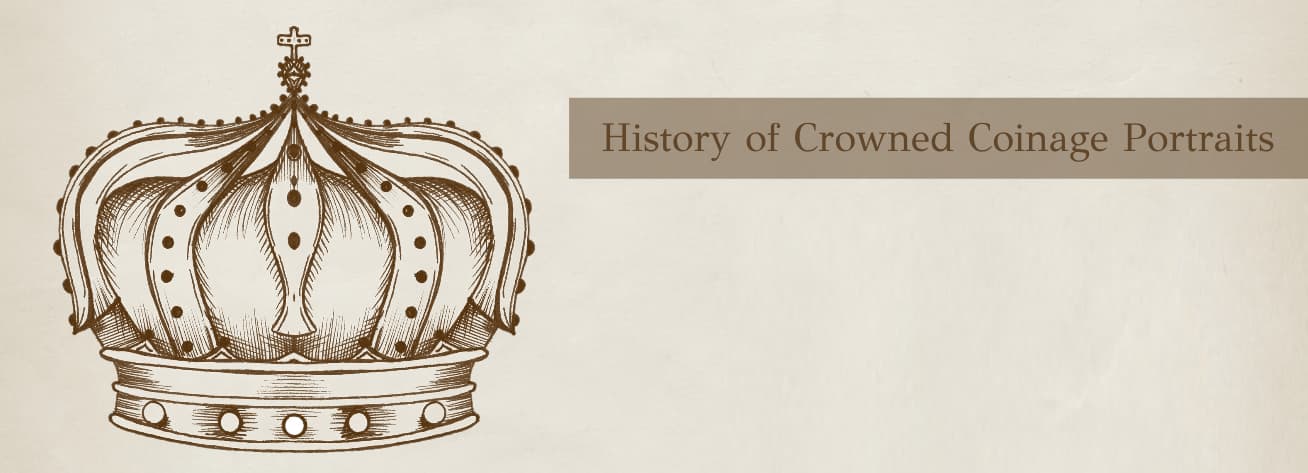
It has been 11 months since Charles III became King of the United Kingdom, following the sad death of his mother, Queen Elizabeth II. This is a huge change for the British public, and new coinage featuring King Charles III is now trickling through into circulation.
If you have noticed that The King’s circulating coinage doesn’t feature him wearing a crown and wondered the reason for this, especially when the late Queen Elizabeth II wore a crown on her circulating coinage portraits, then you have come to the right place! Here is everything you need to know about the history of crowned coinage portraits…
The History of Crowned Coinage Portraits
If you look back at the history of British kings, you will notice that they typically do not wear crowns on any coins featuring their portraits. Going back to the Tudor times, both Henry VIII and Elizabeth I were crowned on their coinage portraits. However, this was changed after the English Civil War. Similarly to Roman coinage, monarchs were depicted on coins wearing a crown of laurels instead. When the monarchy was restored, it was down to the preference of the King or Queen, who could choose to wear either crowns, laurels or to have a bare head on their coinage portraits.
Queen Victoria was shown crowned on some coins during her reign. However, her successors such as Edward VII, George V, and George VI all chose to feature crown-less on their coinage. At the beginning of Queen Elizabeth II’s reign, she also chose to go without a crown. It wasn’t until she had been on the throne for quite some time that different portraits of Her Late Majesty wearing a crown were featured on coinage.
Queen Victoria’s Crowned Coinage Portraits
At the beginning of Queen Victoria’s reign, her portraits did not feature a crown. The Florin, first introduced in the reign of Queen Victoria, was used to trial decimal currency. The obverse of the first florin showing Queen Victoria wearing a crown, was designed by William Wyon. It was the first time in over two hundred years that a crowned monarch appeared on British coinage and was issued from 1851 to 1887.
As well as the ‘Gothic’ portrait featured on the Florin coin, Queen Victoria was shown wearing a crown on multiple coins throughout her reign on the ‘Jubilee Head’, ‘Veiled Head’, and ‘Crowned Regal’ portraits.
Queen Elizabeth II’s Crowned Coinage Portraits
The very first coinage portrait of Queen Elizabeth II was created by Mary Gillick in 1953, and this showed a youthful Queen with her hair tied in a fillet and wreath. It wasn’t until the second portrait was issued in 1968, created by Arnold Machin, that showed Her Late Majesty crowned; wearing the Girls of Great Britain and Ireland tiara.
The third, fourth and fifth portraits of Queen Elizabeth II all followed suit by featuring Queen Elizabeth II wearing a crown. The third portrait, by Raphael Maklouf, portrayed Her Late Majesty wearing the King George IV State Diadem crown. Ian Rank-Broadley reverted the fourth portrait back to Arnold Machin’s design in which the Queen was shown wearing the Girls of Great Britain and Ireland tiara. The fifth and final portrait of Queen Elizabeth II, designed by Jody Clark, also took inspiration from the third portrait and featured the Queen wearing the King George IV State Diadem crown.
The 2023 Coronation of His Majesty King Charles III Gold Proof Sovereign
To celebrate King Charles III being the first British king to be crowned in 85 years, sculptor Martin Jennings created the first crowned coinage portrait of His Majesty to be used on commemorative coins by The Royal Mint. In the design, King Charles III is shown wearing the Tudor Crown, which is featured on his royal cypher.
The reverse side features St George and the dragon by Benedetto Pistrucci, an emblematic design harking back to 1817, which symbolises the triumph of courage and embodies the timeless spirit of British sovereignty. This mythical tale of good triumphing over evil has such a long and illustrious association with the gold sovereign coin that the two are almost synonymous. For more than 200 years, this design has been used on the coins of every British monarch, except for William IV.


